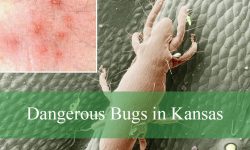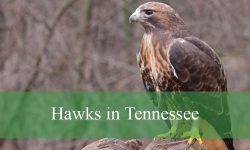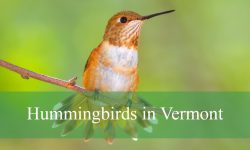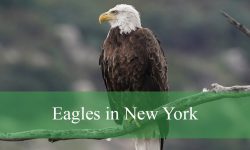When I first started birdwatching in Georgia, I was amazed by the variety of hawks soaring above the forests and fields. Each species has its own unique behaviors and calls, making every sighting an exciting discovery.
From the powerful Red-tailed Hawk cruising over open spaces to the stealthy Cooper’s Hawk darting through suburban trees, exploring these raptors brought me closer to nature in a way I never expected.
I remember the thrill of spotting my first Red-shouldered Hawk perched silently near a swamp, its reddish feathers glowing in the afternoon sun. That moment sparked a deeper passion for learning about Georgia’s hawks—their habits, calls, and the special places they call home. This guide shares everything I’ve discovered along the way.
Common Hawks Found in Georgia
Red-tailed Hawk
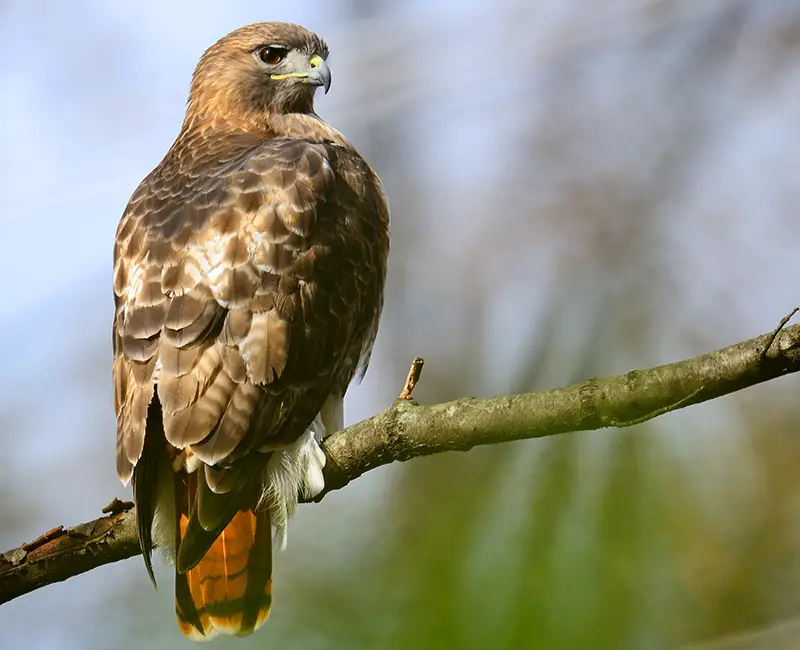
The Red-tailed Hawk is one of the most recognizable and widespread hawks in Georgia. It is well known for its broad, rounded wings and a distinctive reddish-brown tail that is especially visible when the bird is in flight. The plumage of this hawk can vary, but adults generally have a pale underside with a dark band across the belly and a rich reddish tail that gives the species its name. Its sharp, piercing eyes and strong hooked beak help it hunt efficiently.
Measuring about 18 to 26 inches in length with a wingspan ranging from 43 to 57 inches, the Red-tailed Hawk is a fairly large bird of prey. Males are usually slightly smaller than females, but both sexes have similar plumage. Juveniles lack the red tail and instead display brown and white barred tails. This bird’s size and coloration make it easy to identify even from a distance.
In Georgia, Red-tailed Hawks are highly adaptable and can be found year-round across a variety of habitats. They are often spotted perched on roadside poles, fence posts, or soaring high over open fields and woodlands. Their keen eyesight allows them to spot prey such as rodents, rabbits, and snakes from great heights, and they use a characteristic soaring flight pattern while hunting.
Behaviorally, Red-tailed Hawks are solitary hunters but can be seen in loose groups during migration. They are known for their loud, raspy scream which is often used in movies as the iconic “hawk call.” These hawks build large stick nests high in trees or on cliffs, and pairs may remain in the same territory year after year. In Georgia, their adaptability to human-altered landscapes has allowed them to thrive even near suburban areas.
Red-shouldered Hawk
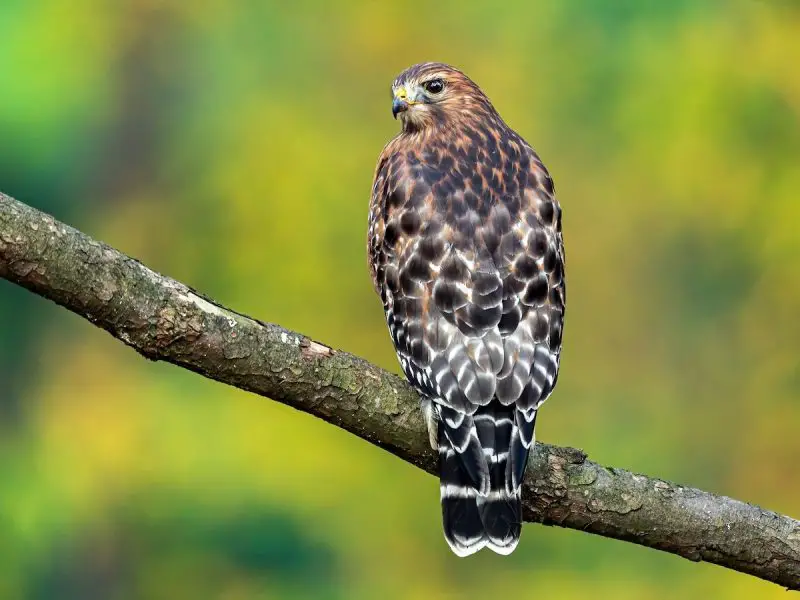
The Red-shouldered Hawk is a medium-sized hawk known for its striking reddish shoulders and barred reddish-orange underparts. Its wings display distinctive black-and-white checkered patterns visible both at rest and in flight. The tail has narrow white bands alternating with black, which are prominent when the bird is soaring. Its call is a loud, repetitive “kee-ah” that carries well through forests and wetlands.
Typically measuring 16 to 19 inches long with a wingspan of 37 to 43 inches, the Red-shouldered Hawk is slightly smaller than the Red-tailed Hawk but stockier in build. It has broad, rounded wings and a relatively long tail that help it maneuver through the dense woodlands it favors. The adults have bright rufous coloring on their chest and shoulders, while juveniles are browner and more streaked.
In Georgia, Red-shouldered Hawks prefer deciduous woodlands, swampy areas, and river bottoms. They are often found near water sources such as rivers and marshes, where their prey—small mammals, amphibians, reptiles, and occasionally birds—is abundant. Their habitat preferences make them somewhat secretive compared to the more open-country Red-tailed Hawk.
Behaviorally, these hawks are known for their territorial calls and aerial displays, especially during breeding season in spring. They build bulky nests high in mature trees, often reusing the same nest annually. Red-shouldered Hawks hunt by perching quietly and scanning for movement, then swooping down swiftly to catch prey. Their agility in wooded areas makes them excellent hunters of smaller, quick prey.
Cooper’s Hawk
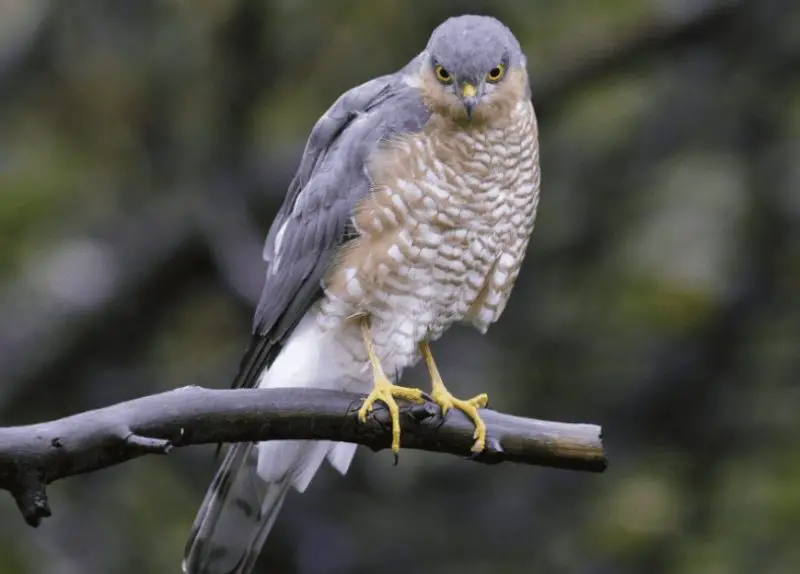
Cooper’s Hawk is a sleek and agile hawk commonly found in Georgia’s forests and suburban areas. It is characterized by its rounded wings and long tail, which provide superb maneuverability through trees. The plumage is mostly slate-gray on the back with a reddish barred chest. Juveniles have brown streaking instead of the adult’s reddish tones. Its eyes are bright orange to red in adults, adding to its fierce appearance.
Measuring between 14 and 20 inches in length, with a wingspan of 24 to 35 inches, Cooper’s Hawks are medium-sized but slender compared to buteos like the Red-tailed Hawk. Females are larger than males, a common trait among raptors. Their long tails with rounded tips help them brake quickly and turn sharply while pursuing prey through dense foliage.
In Georgia, Cooper’s Hawks are frequent visitors to suburban backyards and woodlands, where they prey mainly on medium-sized birds such as doves, pigeons, and starlings. They prefer wooded habitats but have adapted well to urban environments where bird feeders attract prey. Their stealthy hunting style includes sudden bursts of speed and surprise attacks on unsuspecting birds.
These hawks are known for their secretive behavior, often skulking through dense trees to avoid detection. They build stick nests high in large trees and are fiercely territorial during breeding season. Cooper’s Hawks are year-round residents in Georgia, and their population has benefited from expanding suburban woodlands and the abundance of bird prey in these areas.
Sharp-shinned Hawk
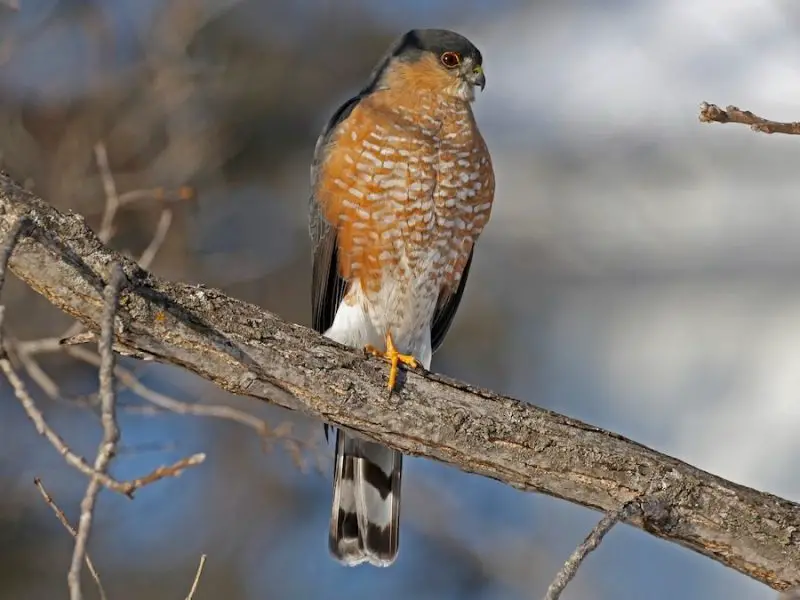
The Sharp-shinned Hawk is the smallest hawk found in Georgia, easily recognizable by its slender body, short rounded wings, and long square-tipped tail. Its plumage is similar to Cooper’s Hawk but smaller and more compact. Adults have blue-gray upperparts and reddish barring on the chest, while juveniles are brown with streaked underparts. Sharp-shinned Hawks have intense yellow eyes as juveniles, which darken to orange or red as they mature.
Typically, these hawks measure 9 to 13 inches in length with a wingspan of about 17 to 24 inches, making them noticeably smaller than Cooper’s Hawks. Their size and wing shape are perfectly adapted for fast, agile flight through dense vegetation, allowing them to surprise prey in thick shrubs and wooded areas.
In Georgia, Sharp-shinned Hawks are often found in mixed woodlands, forests, and even urban parks. They mainly feed on small birds, catching them in rapid chases through tree branches. During migration seasons, they are commonly seen passing through Georgia in flocks or “kettles” that gather as they travel to wintering grounds further south.
Their behavior is marked by swift, acrobatic flight and cautious hunting strategies. Sharp-shinned Hawks build nests in dense trees, sometimes near Cooper’s Hawk nests, and are known to be secretive, avoiding open areas. They are present in Georgia year-round but are more frequently observed during migration in spring and fall.
Broad-winged Hawk
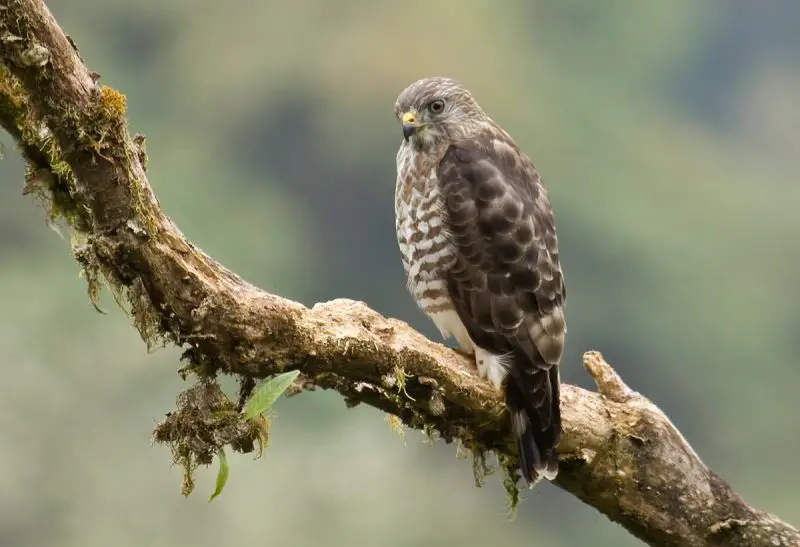
The Broad-winged Hawk is a small buteo hawk known for its compact build, broad wings, and short tail with distinct black-and-white bands. Adults display a rich chestnut barring across the chest and belly, and their wings show a striking two-toned pattern in flight with dark flight feathers contrasting the lighter coverts. Juveniles are browner with streaked undersides. Their call is a high-pitched, whistle-like “kee-eee” sound.
Measuring about 14 to 18 inches in length with a wingspan of 33 to 39 inches, the Broad-winged Hawk is smaller and more compact than the Red-tailed or Red-shouldered Hawks. Its broad wings are ideal for soaring and gliding, especially during migration when these birds travel long distances.
In Georgia, Broad-winged Hawks are most common during the spring and summer breeding season, inhabiting deciduous and mixed forests. They prefer woodlands near water sources and are known for nesting high in tall trees. This species is famous for its large migratory groups called “kettles,” where thousands of Broad-winged Hawks gather and soar together during fall migration.
Their behavior includes soaring flight on thermal currents to conserve energy while traveling. Broad-winged Hawks primarily hunt small mammals, amphibians, reptiles, and large insects, often using a perch-and-wait hunting style. They are shy birds, rarely seen soaring in small numbers outside migration periods in Georgia.
Northern Harrier

The Northern Harrier is a distinctive hawk easily recognized by its owl-like facial disc, which helps it detect prey by sound as well as sight. Unlike most hawks, Northern Harriers have a slim body, long wings, and a long tail that allow them to glide low over fields and marshes with remarkable grace. Their plumage is generally gray in males and brown in females, with white patches visible on the rump during flight.
Measuring between 17 and 20 inches in length with a wingspan ranging from 40 to 46 inches, Northern Harriers are medium-sized but have a more slender, buoyant flight compared to broad-winged or red-tailed hawks. The pronounced facial disc is unique among hawks and contributes to their excellent hunting efficiency in dense grasslands.
In Georgia, Northern Harriers are primarily found in open habitats such as marshes, grasslands, and agricultural fields, especially during winter months. They use their low, slow flight pattern to surprise small mammals, birds, and amphibians. Their preferred hunting method involves flying just above the ground to detect movement, relying heavily on sound due to their facial adaptations.
Behaviorally, Northern Harriers are usually seen flying low and slow with wings held in a shallow V-shape. They are known to be somewhat social during winter, occasionally roosting in groups. Their breeding range includes northern and central Georgia, where they nest on the ground in dense vegetation. Conservation efforts focus on preserving their wetland and grassland habitats.
Rough-legged Hawk
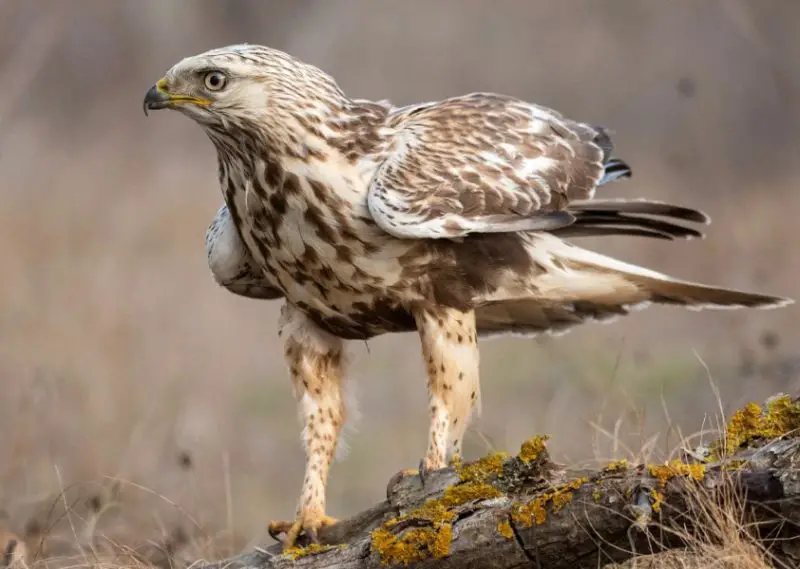
The Rough-legged Hawk is a large, northern species that migrates south during winter and is considered an uncommon visitor to Georgia. It gets its name from the feathers that cover its legs down to the toes, an adaptation for cold climates. The plumage varies from pale to dark morphs, with a characteristic broad white tail base and black terminal band visible in flight.
This hawk measures between 19 and 24 inches in length and has a wingspan of about 52 to 60 inches, making it one of the larger hawks seen in Georgia. Its broad wings and heavy body allow for slow, buoyant flight, which it uses to hover or glide while searching for prey. The large wing size helps it conserve energy during long migrations.
Rough-legged Hawks are typically found in open fields, marshes, and agricultural areas during the winter in Georgia. They hunt primarily small mammals such as voles and mice, often hovering in place before diving to catch prey. Their presence in Georgia is usually limited to the colder months, and sightings are relatively rare.
Their behavior is characterized by slow, deliberate flight patterns and the ability to hover like a kestrel. Rough-legged Hawks are solitary and tend to be quiet, making them less noticeable than other hawks. Conservation status is generally stable, but their wintering grounds require large open spaces free from disturbance.
Swainson’s Hawk
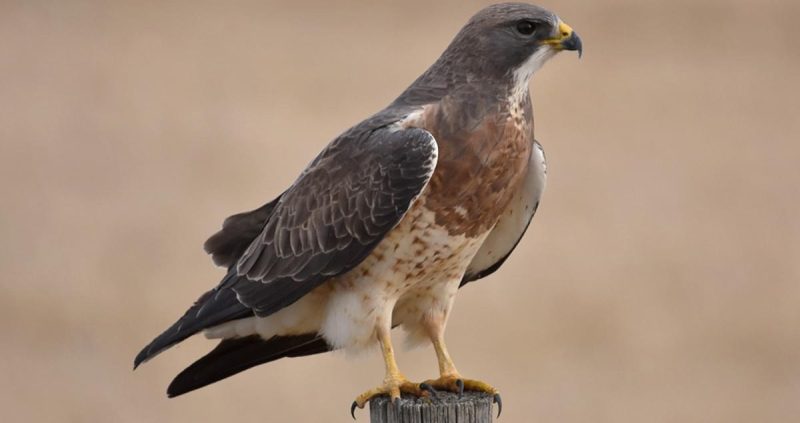
Swainson’s Hawk is a long-distance migratory species known for its slender body and long, narrow wings. Its plumage varies widely, but adults usually have a pale underside with darker flight feathers and a dark patch on the “wrist” of the wing. During flight, they display a graceful soaring style, often seen gliding on thermals in large groups called kettles.
Typically measuring about 18 to 22 inches in length with a wingspan between 45 and 54 inches, Swainson’s Hawks are similar in size to Red-tailed Hawks but more streamlined. Their long wings and light build make them excellent migrants, traveling from North American breeding grounds to wintering areas in South America.
In Georgia, Swainson’s Hawks are rare and mostly observed during migration periods in spring and fall. They prefer open grasslands, agricultural fields, and prairies when seen in the region. Their diet primarily consists of insects, small mammals, and occasionally small birds, which they catch using soaring flight to spot prey from above.
Behaviorally, Swainson’s Hawks are gregarious during migration, forming large flocks that can number in the thousands. Their long migratory journeys are among the longest of any North American hawk species. Due to their rarity in Georgia, sightings are often a special treat for birdwatchers and ornithologists.
Ferruginous Hawk
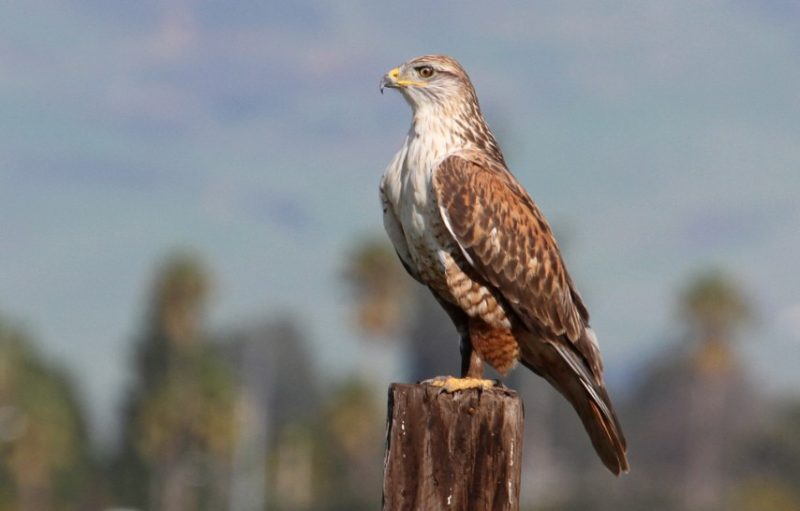
The Ferruginous Hawk is a large and powerful raptor, named for its rust-colored (ferruginous) plumage on the back and shoulders. It is the largest buteo in North America, with a robust build and broad wings. Adults have pale underparts with rust-colored markings and a striking white rump patch that is visible in flight. Juveniles are mottled brown and buff.
This hawk measures 22 to 27 inches in length with a wingspan reaching 54 to 60 inches. Its size and heavy body allow it to take larger prey than most other hawks. Its broad wings are adapted for soaring over open terrain, where it typically hunts.
Ferruginous Hawks are very rare in Georgia, usually appearing as winter vagrants from their normal range in the western and central U.S. When present, they prefer open grasslands, deserts, and agricultural fields where they hunt mammals like rabbits and ground squirrels. Their presence in Georgia is sporadic and often noted by keen observers during colder months.
Behaviorally, these hawks are solitary hunters, relying on soaring flight and sharp eyesight to locate prey. Their large nests are built on cliffs or tall trees when available. Conservation efforts focus on protecting their open habitat and reducing human disturbances in their native range.
Gray Hawk
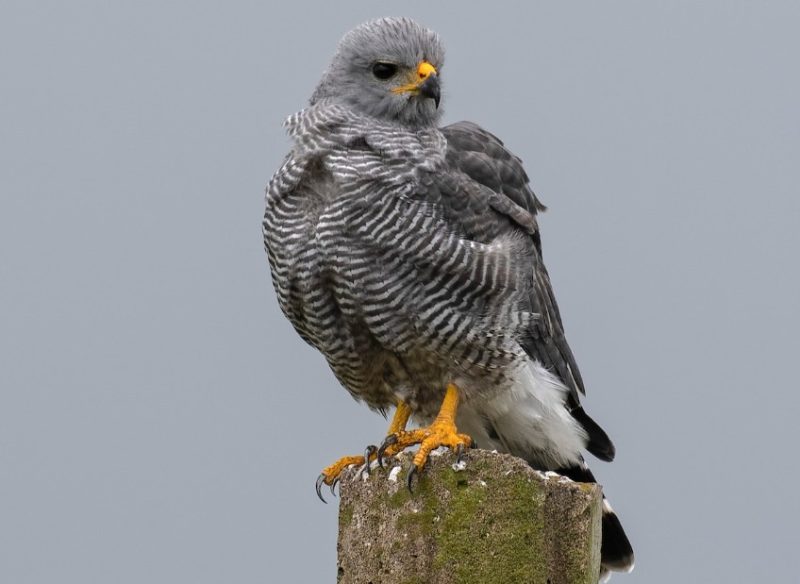
The Gray Hawk is a medium-sized hawk with predominantly gray plumage, distinguished by its relatively slender body and long tail with narrow dark bands. It has a pale face and a hooked beak typical of raptors. Adults have bright yellow legs and feet, adding contrast to their otherwise muted colors. Juveniles appear browner with streaked underparts.
Measuring approximately 15 to 18 inches in length with a wingspan of about 38 to 42 inches, the Gray Hawk is smaller than many buteos and is adapted for forested habitats. Its slim build and long tail aid in agile flight through dense woodlands.
In Georgia, Gray Hawks are extremely rare and considered accidental visitors or vagrants, more commonly found in the southwestern U.S. and Central America. When spotted, they are usually in southern parts of the state near forest edges or river corridors. Their preferred prey includes small reptiles, amphibians, and insects.
Behaviorally, Gray Hawks hunt from perches in the mid to upper forest canopy, swooping down to capture prey. Their quiet, elusive nature and rarity in Georgia make them a fascinating species for birders lucky enough to encounter them. Due to their scarcity, little is known about their habits in this region.
Zone-tailed Hawk
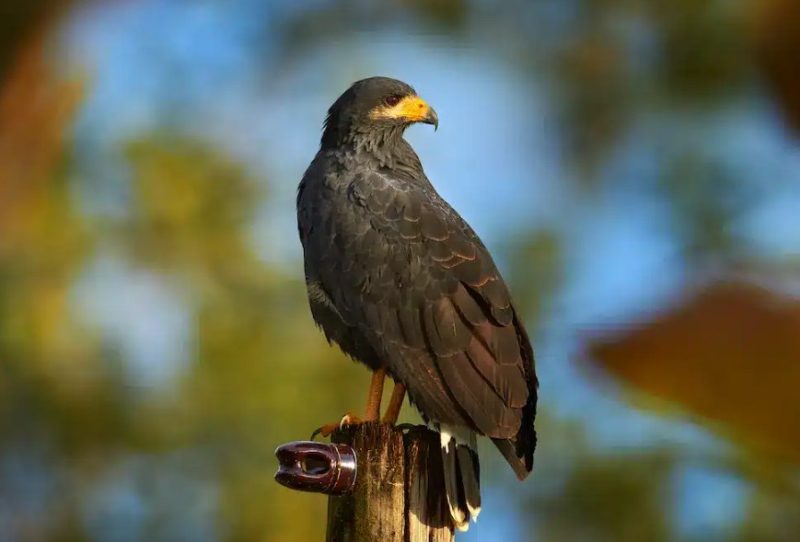
The Zone-tailed Hawk is a medium-sized raptor often mistaken for a turkey vulture due to its similar soaring style and dark plumage. It has a mostly blackish body with faint white bands on the tail, which are visible during flight. Its head is slightly rounded, and it features a hooked beak typical of hawks. The Zone-tailed Hawk’s silent flight and vulture-like appearance help it stealthily approach prey.
Measuring about 18 to 22 inches in length with a wingspan ranging from 42 to 46 inches, the Zone-tailed Hawk is slender and built for agile flight. Its long tail with distinct banding aids in maneuverability, especially when hunting in forested environments or along canyon edges.
In Georgia, this hawk is a rare visitor, more commonly found in the southwestern U.S. and Mexico. Sightings in Georgia are infrequent and usually involve individuals wandering outside their usual range. When present, they inhabit open woodlands and scrub areas, preying mainly on small mammals, reptiles, and birds.
Behaviorally, the Zone-tailed Hawk is notable for its habit of soaring among turkey vultures, blending in to surprise prey. It hunts by gliding low over terrain and then quickly swooping down. Due to its rarity and secretive habits, it is considered a prized sighting for birdwatchers in Georgia.
Common Black Hawk
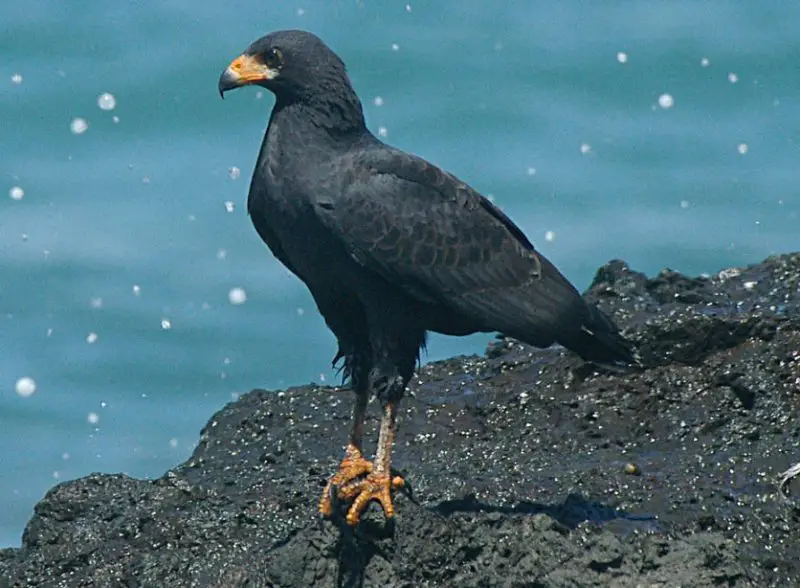
The Common Black Hawk is a robust, dark-plumaged raptor with a broad, rounded tail that features a striking white band near the tip. Its overall appearance is mostly black or dark brown, with yellow legs and a hooked beak. The bird has a stocky build and broad wings, allowing for strong, steady flight in its preferred habitats.
This hawk measures about 18 to 22 inches long with a wingspan of approximately 43 to 47 inches. Its broad wings and tail provide excellent control for flying through riparian woodlands and forested riverbanks. The white tail band is a key identifying feature, especially in flight.
Though Common Black Hawks primarily inhabit the southwestern U.S. and Mexico, they have been recorded as rare visitors in southern Georgia, particularly near rivers and swampy areas. They prefer habitats close to water where they feed on reptiles, amphibians, and fish, occasionally catching small mammals or birds.
Behaviorally, Common Black Hawks are known for their slow, deliberate flight and tendency to perch quietly near water. They often hunt by watching from a perch and then swooping down on prey. Their rarity in Georgia makes them a fascinating species for local bird enthusiasts and ornithologists.
FAQs about Hawks in Georgia
What types of hawks are most common in Georgia?
The most common hawks in Georgia include the Red-tailed Hawk, Red-shouldered Hawk, Cooper’s Hawk, Sharp-shinned Hawk, and Broad-winged Hawk. These species are regularly seen year-round or during migration across various habitats such as woodlands, fields, and wetlands.
When is the best time to see hawks in Georgia?
Hawks can be observed throughout the year in Georgia, but migration seasons in spring and fall are particularly good times to spot species like Broad-winged Hawks and Sharp-shinned Hawks. Winter also brings some northern visitors such as Rough-legged Hawks and Northern Harriers.
How can I distinguish between Cooper’s Hawk and Sharp-shinned Hawk?
Cooper’s Hawks are generally larger, with rounded wing tips and a longer tail with a rounded tip. Sharp-shinned Hawks are smaller, with more squared tail tips and shorter, rounded wings. Both have similar coloring but differ noticeably in size and flight style.
Do hawks in Georgia live in urban areas?
Yes, some hawks like Cooper’s Hawks and Red-tailed Hawks have adapted well to suburban and urban environments. They often hunt birds attracted to feeders and nest in tall trees within parks or residential neighborhoods.
Are any hawks in Georgia endangered or threatened?
Most hawks in Georgia have stable populations; however, habitat loss and environmental changes can impact some species. Conservation efforts help protect their habitats to ensure healthy populations remain throughout the state.
What habitats do hawks prefer in Georgia?
Different hawks have different habitat preferences. For example, Red-shouldered Hawks favor swampy forests and wetlands, while Red-tailed Hawks prefer open fields and edges of woodlands. Northern Harriers are often found in marshes and grasslands, especially during winter.
What do hawks in Georgia typically eat?
Hawks in Georgia primarily feed on small mammals such as rodents and rabbits, birds, reptiles, and occasionally insects. Their diet varies depending on species and habitat, with some specializing in bird prey while others focus on mammals or amphibians.


